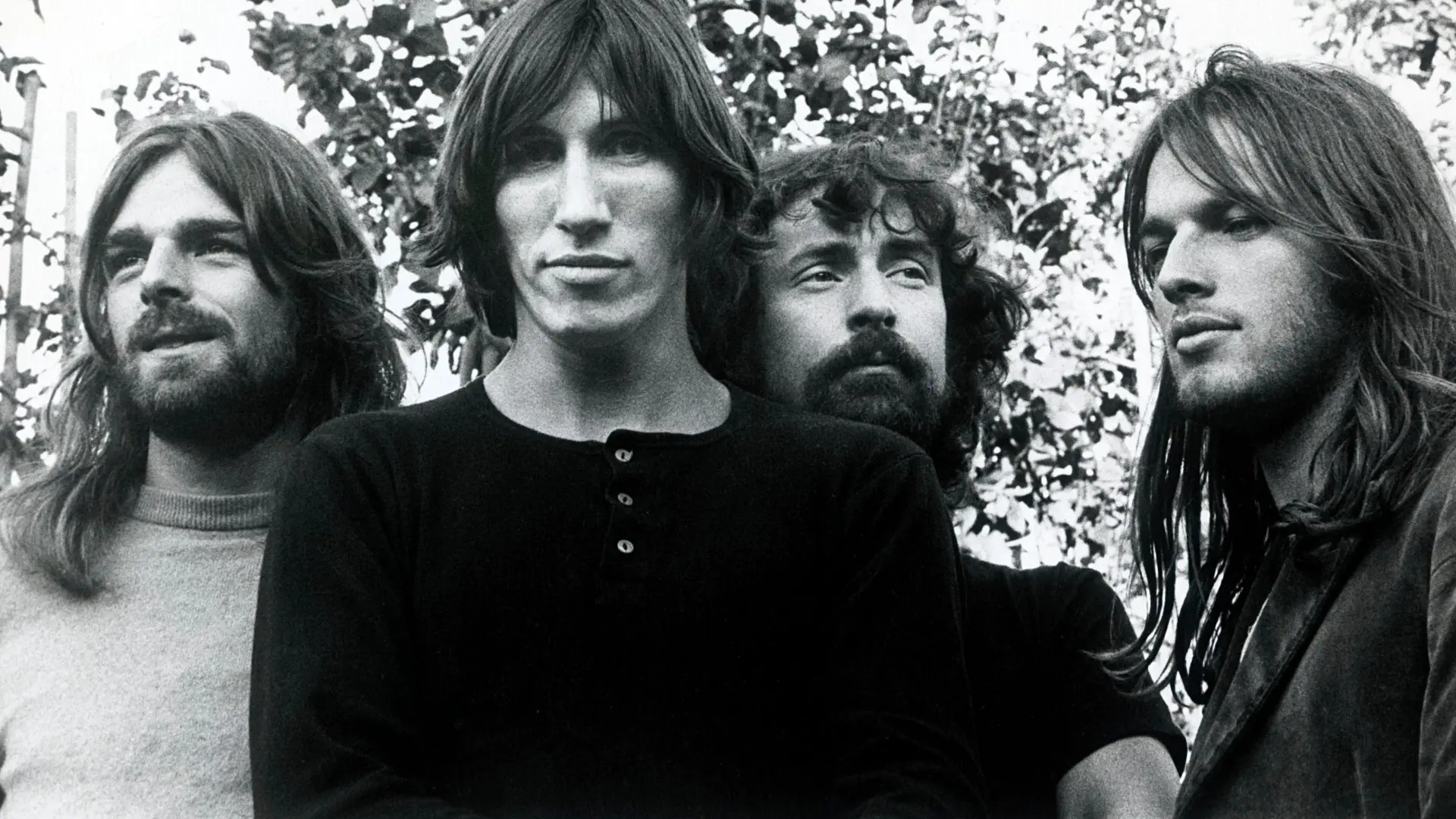Unraveling the Timeless Elegance of Pink Floyd through Their Historic Odyssey
In the annals of music history, few bands have left as indelible a mark on the sonic landscape as Pink Floyd. With an eclectic blend of progressive rock, psychedelic experimentation, and philosophical lyricism, Pink Floyd carved a niche that transcended generations. From their humble beginnings in the 1960s to their meteoric rise to fame, let’s embark on a journey through the mesmerizing tapestry of Pink Floyd’s legacy.
History and Development: Echoes of Innovation
The genesis of Pink Floyd can be traced back to the vibrant music scene of 1960s London. Initially known as The Tea Set, the band underwent a transformation, adopting the name Pink Floyd in honor of two blues musicians, Pink Anderson and Floyd Council. Led by visionary Syd Barrett, Pink Floyd embarked on a sonic exploration that defied conventions. Their debut album, “The Piper at the Gates of Dawn” (1967), showcased Barrett’s whimsical lyricism and psychedelic guitar riffs, laying the foundation for their distinctive sound.
As the 1970s dawned, Pink Floyd experienced a metamorphosis with the departure of Barrett due to his deteriorating mental health. Enter Roger Waters, whose lyrical prowess and conceptual vision would redefine the band’s trajectory. With albums like “Meddle” (1971) and “The Dark Side of the Moon” (1973), Pink Floyd embarked on a sonic odyssey characterized by ethereal soundscapes and existential themes. Their groundbreaking use of studio effects and innovative instrumentation set them apart as pioneers of the progressive rock genre.
Evolution of Pink Floyd: A Journey Through Phases
Pink Floyd’s evolution is marked by distinct phases, each characterized by shifting dynamics, creative exploration, and musical innovation. From their formative years with Syd Barrett to the post-Roger Waters era, Pink Floyd’s trajectory is a testament to their adaptability and artistic resilience.

The Syd Barrett Era: Psychedelic Pioneers
In their nascent years, Pink Floyd blazed a trail through the psychedelic landscape under the visionary leadership of Syd Barrett. His whimsical lyricism and avant-garde sensibilities propelled the band into the forefront of London’s underground music scene. Albums like “The Piper at the Gates of Dawn” (1967) epitomized Barrett’s psychedelic vision, featuring surreal compositions and experimental soundscapes. However, Barrett’s increasing struggles with mental health issues led to his departure from the band, marking the end of an era but laying the groundwork for Pink Floyd’s evolution.
Post-Syd Barrett Transition: Roger Waters’ Ascendancy
Following Syd Barrett’s departure, Pink Floyd underwent a period of transition, grappling with the loss of their creative visionary. Roger Waters emerged as the band’s de facto leader, assuming the mantle of principal songwriter and conceptual architect. Albums like “Meddle” (1971) signaled Pink Floyd’s departure from their psychedelic roots towards a more experimental sound. The instrumental epic “Echoes” showcased the band’s newfound penchant for atmospheric compositions and sonic experimentation, foreshadowing their future sonic odysseys.
The Roger Waters Era: Conceptual Epics and Artistic Peaks
The pinnacle of Pink Floyd’s artistic prowess came during the Roger Waters era, marked by conceptual epics and thematic grandeur. Albums like “The Dark Side of the Moon” (1973) and “Wish You Were Here” (1975) cemented Pink Floyd’s status as progressive rock luminaries, exploring themes of alienation, existentialism, and the human condition. Waters’ introspective lyrics and conceptual narratives resonated with audiences on a profound level, elevating Pink Floyd to unprecedented heights of acclaim and commercial success.
Post-Roger Waters Split: David Gilmour’s Reign
The departure of Roger Waters in the 1980s marked a significant turning point in Pink Floyd’s history, prompting speculation about the band’s future. David Gilmour, along with remaining members Richard Wright and Nick Mason, assumed control of Pink Floyd’s creative direction. Despite Waters’ absence, Pink Floyd continued to produce compelling music, releasing albums like “A Momentary Lapse of Reason” (1987) and “The Division Bell” (1994). Gilmour’s emotive guitar work and melodic sensibilities imbued Pink Floyd’s later albums with a sense of continuity, ensuring their enduring legacy in the annals of rock history.

Continued Evolution: Enduring Influence and Artistic Legacy
Throughout their storied career, Pink Floyd has undergone numerous transformations, adapting to changing musical landscapes while retaining their distinctive identity. From the psychedelic experimentation of the Syd Barrett era to the conceptual grandeur of the Roger Waters era, Pink Floyd’s journey is a testament to the enduring power of artistic reinvention. As they continue to inspire and captivate audiences worldwide, Pink Floyd’s legacy remains etched in the annals of music history, transcending generations and defying the passage of time.
Key Personnel: Architects of Sound
Pink Floyd’s enduring legacy is indebted to the collective talents and contributions of its main members, each bringing their unique skills and sensibilities to the band’s sonic tapestry.
Syd Barrett: The Visionary Founder
As the founding member and creative force behind Pink Floyd, Syd Barrett played a pivotal role in shaping the band’s early sound and aesthetic. His whimsical lyricism, experimental guitar work, and psychedelic vision set Pink Floyd apart in the burgeoning London music scene of the 1960s. Barrett’s influence can be heard in the surreal compositions and whimsical melodies of albums like “The Piper at the Gates of Dawn” (1967), laying the groundwork for Pink Floyd’s sonic exploration.
Roger Waters: The Lyrical Genius and Conceptual Architect
Roger Waters emerged as Pink Floyd’s principal songwriter and conceptual visionary, crafting poignant lyrics and thematic narratives that resonated with audiences worldwide. His introspective themes, existential musings, and conceptual epics became synonymous with Pink Floyd’s identity, elevating the band to iconic status. Waters’ lyrical prowess and conceptual depth can be heard in seminal albums like “The Dark Side of the Moon” (1973) and “The Wall” (1979), which explored themes of madness, mortality, and the human condition with unparalleled depth and complexity.

David Gilmour: The Guitar Virtuoso and Vocalist
David Gilmour’s emotive guitar solos and ethereal vocals added a distinctive dimension to Pink Floyd’s sonic palette, elevating their music to transcendent heights. Renowned for his melodic sensibilities and expressive playing style, Gilmour’s contributions enriched Pink Floyd’s compositions, infusing them with soulful melodies and atmospheric textures. His iconic guitar work can be heard in timeless tracks like “Comfortably Numb” and “Shine On You Crazy Diamond,” cementing his status as one of rock’s premier guitarists.
Richard Wright: The Versatile Keyboardist and Musical Architect
Richard Wright’s melodic contributions and atmospheric keyboard textures provided the sonic foundation for Pink Floyd’s compositions, adding depth and dimension to their sound. His versatile playing style and intuitive understanding of musical arrangement helped shape Pink Floyd’s signature sound, imbuing their music with a sense of grandeur and sophistication. Wright’s keyboard wizardry can be heard throughout Pink Floyd’s discography, from the haunting synthesizer lines of “Welcome to the Machine” to the ethereal piano passages of “Us and Them.”
Nick Mason: The Masterful Drummer and Rhythmic Anchor
Nick Mason’s rhythmic precision and creative flair served as the backbone of Pink Floyd’s sound, providing the driving force behind their expansive compositions. His understated yet dynamic drumming style added a sense of propulsion and momentum to Pink Floyd’s music, guiding listeners through epic sonic landscapes with finesse and subtlety. Mason’s rhythmic contributions can be heard in the hypnotic grooves of tracks like “Time” and “Money,” solidifying his reputation as one of rock’s most accomplished drummers.
Influence and Legacy: Shaping the Future of Music
Collectively, the main members of Pink Floyd have left an indelible mark on the landscape of rock music, shaping the course of musical history with their innovative spirit and artistic vision. Their eclectic blend of progressive rock, psychedelic experimentation, and philosophical lyricism has inspired countless artists and resonated with audiences across generations. As pioneers of the genre and architects of sound, Pink Floyd’s influence extends far beyond their own discography, permeating popular culture and shaping the collective consciousness of music lovers worldwide.
Type of Music: A Sonic Odyssey
Pink Floyd’s music transcends traditional labels, encompassing elements of progressive rock, psychedelic, and experimental genres. Their sonic tapestries are marked by atmospheric soundscapes, intricate instrumentation, and thought-provoking lyricism. From the ethereal melodies of “Wish You Were Here” to the epic grandeur of “The Wall,” Pink Floyd’s repertoire spans a spectrum of emotions and experiences. Their music invites listeners on a journey of introspection and transcendence, exploring themes of alienation, existentialism, and the human condition.

Pink Floyd’s style of music is a testament to their boundless creativity, innovative spirit, and willingness to push the boundaries of musical expression. From their psychedelic roots to their conceptual epics, Pink Floyd’s evolution of sound is a journey marked by sonic experimentation, thematic exploration, and artistic reinvention.
Psychedelic Pioneers: The Syd Barrett Era
In their formative years, Pink Floyd emerged as pioneers of the psychedelic movement, channeling the spirit of the 1960s counterculture into their music. Under the visionary leadership of Syd Barrett, Pink Floyd crafted whimsical compositions characterized by surreal lyrics, kaleidoscopic imagery, and experimental instrumentation. Albums like “The Piper at the Gates of Dawn” (1967) exemplified Pink Floyd’s psychedelic sound, featuring ethereal melodies, swirling guitars, and cosmic soundscapes that transported listeners to otherworldly realms.
Experimental Explorations: Post-Syd Barrett Transition
Following Syd Barrett’s departure, Pink Floyd embarked on a period of sonic experimentation and musical exploration. Roger Waters emerged as the band’s principal songwriter and conceptual architect, steering Pink Floyd towards a more ambitious and introspective direction. Albums like “Meddle” (1971) signaled Pink Floyd’s departure from their psychedelic roots towards a more experimental sound, showcasing extended compositions and atmospheric textures. The instrumental epic “Echoes” epitomized Pink Floyd’s newfound penchant for sonic innovation, featuring intricate arrangements and dynamic shifts in tone and mood.
Conceptual Epics: The Roger Waters Era
The pinnacle of Pink Floyd’s artistic evolution came during the Roger Waters era, marked by conceptual epics and thematic grandeur. Albums like “The Dark Side of the Moon” (1973) and “Wish You Were Here” (1975) showcased Pink Floyd’s mastery of mood and atmosphere, exploring themes of alienation, existentialism, and the human condition with unparalleled depth and complexity. Waters’ introspective lyrics and conceptual narratives provided a narrative framework for Pink Floyd’s sonic explorations, elevating their music to transcendent heights of emotional resonance and artistic expression.
Synthetic Symphonies: Post-Roger Waters Split
In the aftermath of Roger Waters’ departure, Pink Floyd underwent a period of transition and reinvention, grappling with the challenge of defining their identity in the absence of their principal songwriter and conceptual visionary. Albums like “A Momentary Lapse of Reason” (1987) and “The Division Bell” (1994) showcased Pink Floyd’s continued evolution, incorporating elements of electronic music and ambient soundscapes into their sonic palette. David Gilmour’s emotive guitar work and melodic sensibilities imbued Pink Floyd’s later albums with a sense of continuity, ensuring their enduring relevance and influence in the ever-changing landscape of rock music.
What Makes Pink Floyd Unique?
At the heart of Pink Floyd’s uniqueness lies their fearless spirit of experimentation, unwavering commitment to artistic integrity, and ability to seamlessly blend diverse musical elements into a cohesive sonic tapestry. From their early forays into psychedelia to their epic conceptual narratives, Pink Floyd defied conventions and challenged perceptions, forging a path of sonic innovation and emotional resonance that continues to captivate audiences worldwide. Their eclectic blend of progressive rock, psychedelic exploration, and philosophical introspection remains unparalleled in the annals of music history, cementing Pink Floyd’s status as cultural icons and musical trailblazers.

Essential Albums: The Pinnacle of Artistry
Pink Floyd’s discography is a rich tapestry of sonic innovation and artistic brilliance, with several albums standing out as essential milestones in their illustrious career. Each album represents a pinnacle of artistry, showcasing Pink Floyd’s evolution as musicians and storytellers while leaving an indelible mark on the landscape of rock music.
“The Dark Side of the Moon” (1973)
Arguably Pink Floyd’s magnum opus, “The Dark Side of the Moon” stands as a seminal masterpiece of progressive rock. Conceptualized as a thematic exploration of the human experience, the album delves into themes of madness, mortality, and the passage of time with unparalleled depth and complexity. From the haunting heartbeat pulse of “Speak to Me” to the ethereal atmospheres of “Time” and “Us and Them,” each track seamlessly blends together to create a seamless sonic journey. The album’s iconic cover art and prism imagery have become synonymous with Pink Floyd’s legacy, cementing its status as one of the best-selling and most critically acclaimed albums of all time.
“Wish You Were Here” (1975)
A poignant tribute to former bandmate Syd Barrett, “Wish You Were Here” is a testament to Pink Floyd’s emotional depth and musical craftsmanship. The album explores themes of absence, longing, and disillusionment, juxtaposing introspective ballads with epic instrumental passages. From the melancholic title track to the sprawling odyssey of “Shine On You Crazy Diamond,” each song resonates with a sense of longing and nostalgia, capturing the essence of Pink Floyd’s bittersweet journey. “Wish You Were Here” stands as a timeless masterpiece, celebrated for its emotive lyricism, evocative melodies, and atmospheric production.
“The Wall” (1979)
A sprawling conceptual opus, “The Wall” is a tour de force of theatricality, ambition, and emotional intensity. Conceived as a rock opera exploring themes of isolation, alienation, and personal transformation, the album unfolds as a narrative epic spanning the life of protagonist Pink. From the anthemic defiance of “Another Brick in the Wall (Part II)” to the haunting introspection of “Comfortably Numb,” each song contributes to the album’s immersive storyline, culminating in a cathartic climax of self-realization and redemption. “The Wall” remains a monumental achievement in Pink Floyd’s discography, revered for its ambitious scope, thematic depth, and enduring cultural impact.
“Animals” (1977)
A scathing critique of societal decay and moral corruption, “Animals” showcases Pink Floyd at their most politically charged and musically adventurous. Drawing inspiration from George Orwell’s “Animal Farm,” the album presents a dystopian allegory of class struggle and social injustice, with each song representing a different societal archetype. From the biting satire of “Pigs (Three Different Ones)” to the epic grandeur of “Dogs” and “Sheep,” “Animals” is a relentless sonic assault that confronts listeners with uncomfortable truths and provocative imagery. With its raw aggression, complex compositions, and unflinching social commentary, “Animals” remains a testament to Pink Floyd’s fearless pursuit of artistic expression and social relevance.
Each of these essential albums represents a high point in Pink Floyd’s illustrious career, showcasing their unparalleled musicianship, thematic depth, and sonic innovation. From the timeless classics of “The Dark Side of the Moon” and “Wish You Were Here” to the conceptual grandeur of “The Wall” and the incisive social commentary of “Animals,” Pink Floyd’s discography continues to captivate and inspire audiences around the world, cementing their legacy as one of the greatest bands in rock history.
Essential Tracks: Echoes of Genius
As we delve into Pink Floyd’s discography, we unearth a treasure trove of timeless tracks that have become emblematic of their legendary status. Each album is a sonic journey, filled with evocative melodies, thought-provoking lyrics, and atmospheric soundscapes that transport listeners to new realms of musical exploration. Let’s embark on a voyage through Pink Floyd’s essential tracks, unraveling the mysteries and majesty of their iconic albums.
“The Dark Side of the Moon” (1973)
- “Money”: A scathing critique of consumerism and greed, “Money” showcases Pink Floyd’s signature blend of groovy rhythms, soulful vocals, and experimental sound effects. David Gilmour’s iconic guitar riff and Roger Waters’ biting lyrics combine to create an irresistible anthem that remains as relevant today as it was upon its release.
- “Time”: An existential meditation on the passage of time, “Time” captivates listeners with its haunting vocals, intricate instrumentation, and poignant lyrics. From the ticking clocks to the ethereal guitar solos, every element of the song contributes to its timeless allure, inviting introspection and reflection on the fleeting nature of existence.
- “Us and Them”: A mesmerizing exploration of the human condition, “Us and Them” envelops listeners in a lush sonic landscape, punctuated by Richard Wright’s ethereal keyboards and Roger Waters’ introspective lyrics. The song’s atmospheric beauty and emotional depth make it a standout track on an album renowned for its thematic coherence and artistic vision.
“Wish You Were Here” (1975)
- “Shine On You Crazy Diamond”: A haunting tribute to Syd Barrett, “Shine On You Crazy Diamond” is a sprawling epic that spans multiple movements, showcasing Pink Floyd’s mastery of mood and atmosphere. From the ethereal opening chords to the searing guitar solos, the song evokes a sense of nostalgia and longing, serving as a poignant reminder of Barrett’s enduring influence on the band.
- “Wish You Were Here”: The title track of the album is a heartfelt ode to absent friends, characterized by its soulful vocals, acoustic guitar arpeggios, and emotive lyrics. David Gilmour’s plaintive vocals and Roger Waters’ poignant verses capture the bittersweet essence of longing and loss, resonating with listeners on a deeply personal level.
- “Welcome to the Machine”: A dystopian masterpiece, “Welcome to the Machine” immerses listeners in a surreal sonic landscape, fueled by Roger Waters’ biting social commentary and David Gilmour’s atmospheric guitar work. The song’s hypnotic rhythms and otherworldly textures serve as a stark reminder of the dehumanizing effects of modern society, inviting contemplation on the nature of existence in an increasingly mechanized world.
“The Wall” (1979)
- “Comfortably Numb”: A transcendent anthem of alienation and disillusionment, “Comfortably Numb” showcases Pink Floyd at the height of their creative powers. David Gilmour’s searing guitar solos and Roger Waters’ haunting vocals combine to create a sense of emotional catharsis that resonates with listeners long after the music has ended.
- “Another Brick in the Wall (Part II)”: A rebellious anthem against the oppressive forces of authority and conformity, “Another Brick in the Wall (Part II)” captivates with its infectious melody, anthemic chorus, and defiant lyrics. The song’s message of empowerment and resistance struck a chord with audiences worldwide, cementing its status as one of Pink Floyd’s most iconic tracks.
- “Hey You”: A haunting ballad of isolation and longing, “Hey You” captivates with its haunting vocals, atmospheric guitars, and introspective lyrics. The song’s melancholic beauty and haunting melody evoke a sense of yearning and introspection, inviting listeners to immerse themselves in its emotional depth and complexity.
Legacy and Significant Reviews: Immortal Influence
Pink Floyd’s influence extends far beyond the realm of music, permeating popular culture and shaping the collective consciousness. Their iconic imagery, evocative lyrics, and innovative sound have left an indelible mark on generations of artists and audiences alike. Critics have hailed Pink Floyd as pioneers of the progressive rock genre, praising their experimental spirit, technical virtuosity, and thematic depth.
- Rolling Stone – Pink Floyd: Explore Rolling Stone’s coverage of Pink Floyd’s legacy and influence on contemporary music.
- BBC Music – Pink Floyd: Delve into BBC Music’s comprehensive overview of Pink Floyd’s discography, history, and cultural impact.
- The Guardian – Pink Floyd: Read The Guardian’s in-depth articles and reviews covering Pink Floyd’s iconic albums, concerts, and legacy.
Similar Bands: Echoes of Inspiration
While Pink Floyd’s sound is undeniably unique, several bands have drawn inspiration from their innovative approach to music. Some notable similar bands include:
- King Crimson: Known for their complex compositions and avant-garde sensibilities, King Crimson shares Pink Floyd’s experimental ethos.
- Yes: With their virtuosic musicianship and epic soundscapes, Yes echoes the progressive rock elements of Pink Floyd.
- Genesis: Led by Peter Gabriel and Phil Collins, Genesis combines intricate melodies and theatricality, reminiscent of Pink Floyd’s conceptual narratives.
These bands stand as heirs to Pink Floyd’s legacy, perpetuating the spirit of musical innovation and exploration.
Pink Floyd
In conclusion, Pink Floyd’s journey is a testament to the transformative power of music. From their humble beginnings in the psychedelic era to their status as cultural icons, Pink Floyd has defied conventions, challenged perceptions, and transcended boundaries. Through their timeless music and thought-provoking lyrics, Pink Floyd continues to inspire and resonate with audiences around the globe, leaving an enduring legacy that will echo through the corridors of time.





